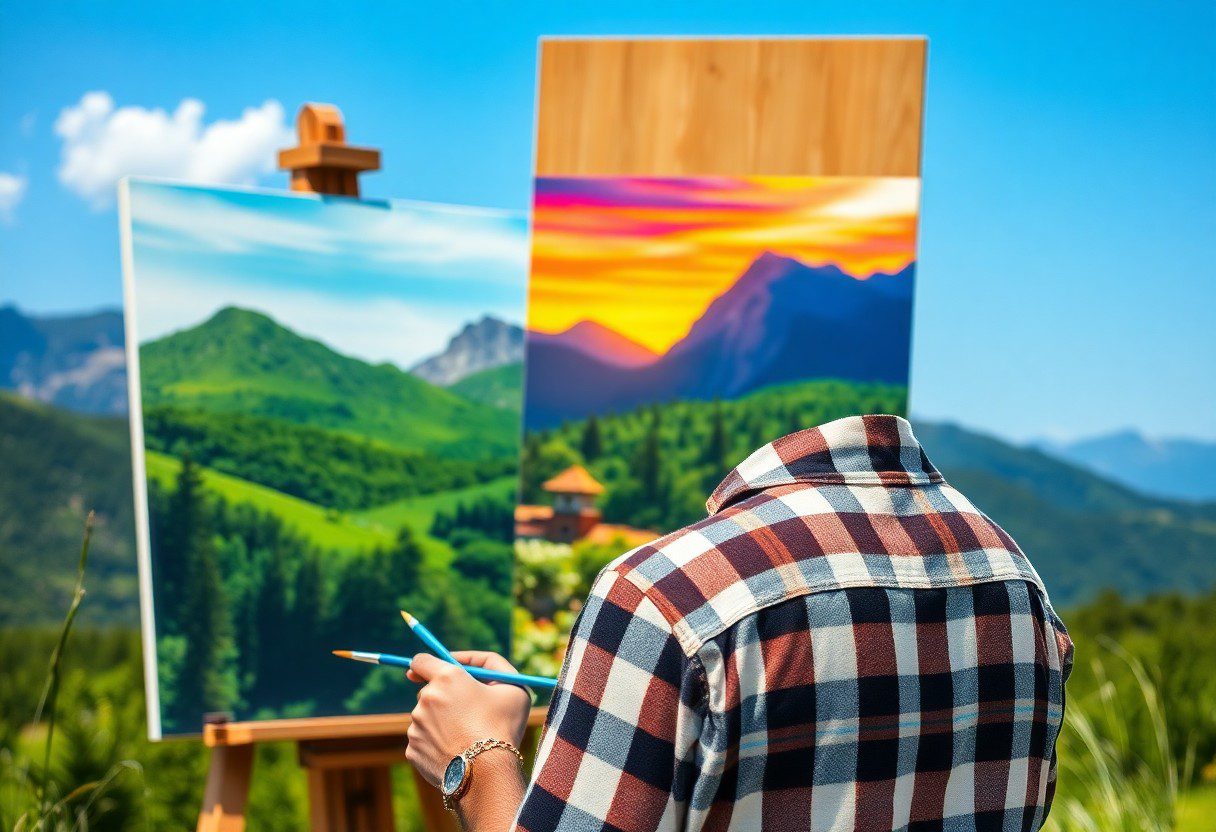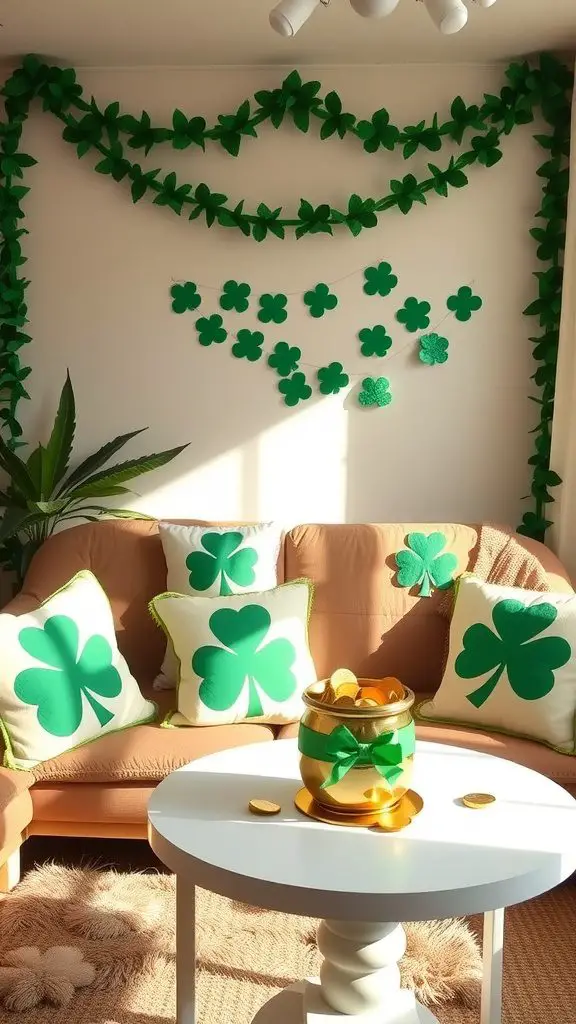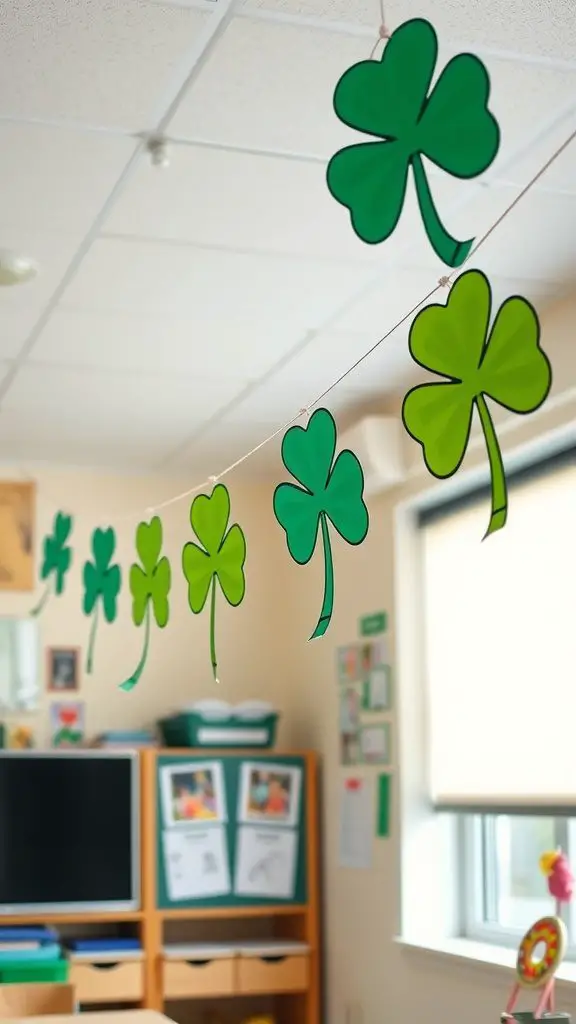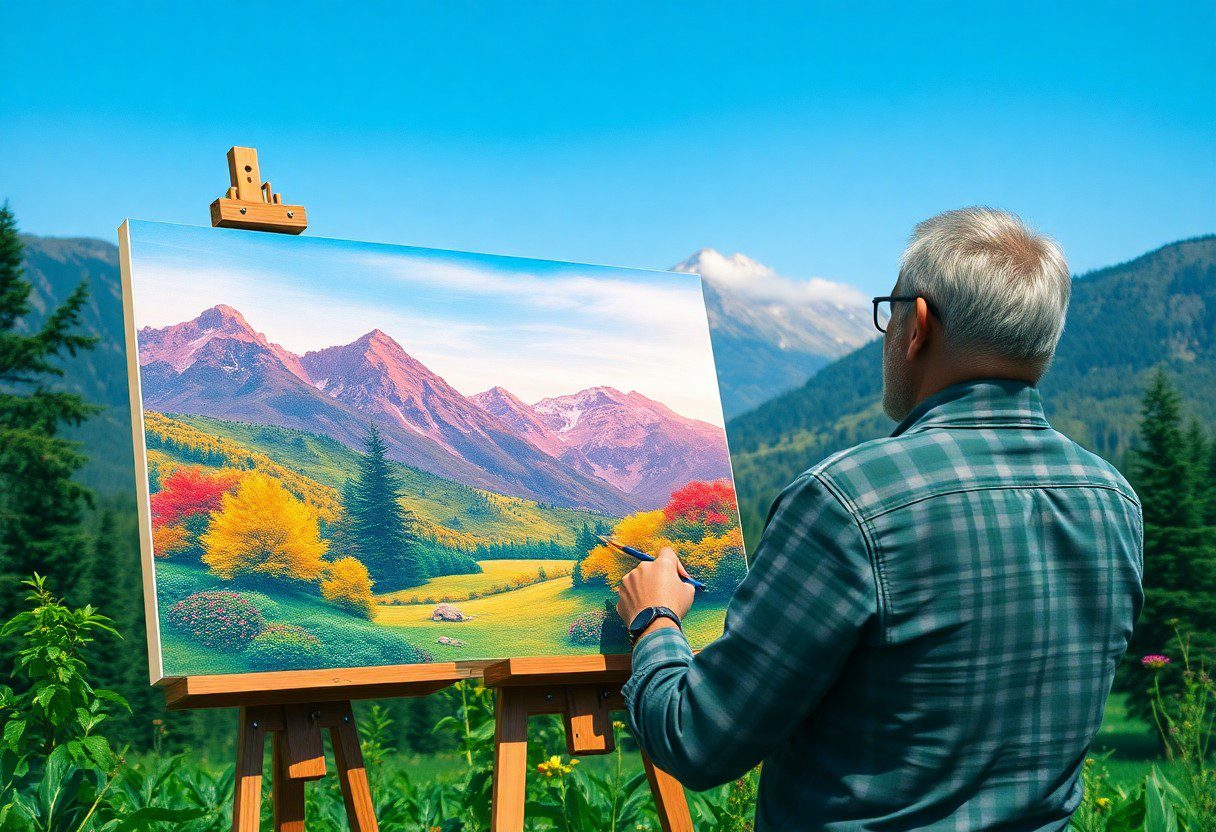Techniques that draw inspiration from nature can help you explore the beauty of the outdoors and translate it onto canvas like never before. By incorporating elements such as natural pigments and organic textures, you can create stunning pieces that resonate with the essence of the environment. Emphasizing light, color, and form, you’ll not only enhance your artistic skills but also develop a deeper connection with the world around you. Dive into these nature-inspired art techniques and discover how to bring the vibrancy of the outdoors into your artwork.
Understanding Nature’s Palette
For any artist eager to capture the essence of the outdoors on canvas, understanding nature’s palette is crucial. By observing and appreciating the diverse array of colors, textures, and forms that nature offers, you can profoundly enrich your artwork. The beauty found in natural landscapes not only inspires creativity but also allows for deeper emotional expression, enabling you to connect with your audience in a unique way.
Colors Found in Natural Landscapes
The vibrant colors present in natural landscapes are as diverse as the environments themselves. From the rich greens of lush forests to the warm oranges and reds of sunsets, observing the interplay of colors in different seasons can inspire your palette. By studying these hues, you will learn to mix shades that evoke specific moods, enhancing the emotional resonance of your artwork.
Textures and Forms of the Outdoors
Below the surface of colors lies the captivating world of textures and forms found in nature, crucial elements for creating depth in your art. Different surfaces, such as the rough bark of trees or the smoothness of a pebble-strewn riverbank, can inform how you represent various elements in your work. The interplay between light and shadow on these forms adds a dynamic quality that can elevate your painting’s realism.
Hence, exploring the unique textures and forms in nature can significantly influence how you portray your subjects. Pay attention to the roughness of rocks, the softness of grasses, and the intricate patterns of leaves. Capturing these details will not only enhance the visual interest of your composition but also create a stronger connection between your audience and the natural world you seek to represent. By integrating these elements into your artwork, you invite viewers to experience the outdoors in a way that is both intimate and profound.
Techniques for Capturing Nature
Assuming you are ready to embrace the beauty of the great outdoors, various techniques can help you effectively capture nature on canvas. From plein air painting to using natural materials, immersing yourself in the environment allows for a deeper understanding of color, texture, and light. Engaging with nature not only enhances your artistic skills but also fosters a profound connection to your surroundings, inspiring your creativity and unique expression. Embracing these techniques will elevate your nature-inspired artwork and reveal the wonder of the world around you.
Plein Air Painting Essentials
Techniques for plein air painting start with selecting your location, ensuring you have the right materials like portable easels and weather-resistant paints. You should focus on capturing the changing light and atmosphere, taking quick notes or sketches to guide your work. Be prepared for shifting weather and shifting light, allowing you to adapt your palette and approach as needed. Practicing regularly in different environments enhances your ability to express the essence of nature in your art.
Using Natural Materials in Art
Using natural materials in art can deepen your connection to the environment and introduce unique textures and colors into your work. By gathering items such as leaves, stones, or even soil, you can create sustainable, eco-friendly pieces that reflect the beauty of the outdoors.
Plein air painting employing natural materials can elevate your artistic expression significantly. As you explore your surroundings, collecting natural items like twigs, leaves, and petals can offer rich textures and colors to your work. Incorporating these elements into your art encourages you to make a sustainable statement and connects your piece to the environment in a meaningful way. Whether you use these materials directly or as inspiration for your palette, they enrich your narrative and invite viewers to appreciate nature’s beauty in a profound way.
Incorporating Natural Patterns
Even as you explore nature for inspiration, incorporating natural patterns into your artwork allows you to create a deeper connection with the environment. These patterns, found in flora, fauna, and landscapes, can guide your composition and color choices, bringing an organic flow to your canvas. By studying the repetitive designs and textures that occur in nature, you can infuse your art with a sense of harmony that echoes the elegance of the outdoors.
Biomimicry and Its Influence on Art
Among the most fascinating aspects of nature-inspired art is biomimicry, where artists draw inspiration from nature’s own engineering solutions. This practice not only fosters creativity but also encourages sustainable methods, allowing you to reflect the beauty of natural forms in a way that is both innovative and environmentally friendly. By adopting strategies that mimic nature’s functions, your artwork can develop a unique and meaningful aesthetic.
The Role of Symmetry and Asymmetry
Between the concepts of symmetry and asymmetry lies a rich terrain for your artistic exploration. Symmetry brings balance and stability to your pieces, often evoking feelings of calm and order. In contrast, asymmetry introduces dynamic tension and movement, allowing your artwork to capture the unpredictable essence of nature. Mixing these elements can create visual interest and depth, helping you express the complexity of the natural world.
The balance of symmetry provides a sense of order and tranquility, often found in serene landscapes and rhythmic patterns of leaves. On the other hand, asymmetry generates a sense of movement and energy, reflecting the chaotic yet beautiful nature of reality. By oscillating between these two approaches, you harness an important artistic tool that can evoke a range of sensations in your audience. This interplay can also represent the delicate balance present in nature, showcasing its transformative power and diversity through your unique artistic lens.
Tools and Mediums Inspired by Nature
Many artists are turning to nature for inspiration not only in their subject matter but also in the tools and mediums they use. Exploring natural elements allows you to create art that feels more harmonious and connected to the environment. By incorporating materials sourced from your surroundings, you can develop a distinctive style that resonates with the beauty of the outdoors. From handmade papers to organic pigments, these tools can enhance your creative process and the authenticity of your artwork.
Eco-Friendly Paints and Brushes
Before you start your nature-inspired art journey, consider using eco-friendly paints and brushes. These sustainable options are crafted from natural ingredients such as plant dyes and recycled materials, ensuring that your artistic expression has a minimal impact on the environment. By choosing these eco-conscious tools, you not only support a healthier planet but also harness colors and textures inspired directly by nature, enriching your artwork further.
Using Nature as a Canvas
About the innovative concept of utilizing nature itself as your canvas, this approach enables you to take your art outdoors, using elements like rocks, leaves, or even tree bark. By directly engaging with these organic bases, you create artworks that reflect your immediate environment in an undeniably authentic way. This method not only promotes interaction with nature but also encourages a profound appreciation for its natural beauty and diversity.
Consequently, using nature as a canvas provides endless creative opportunities, offering a unique way to express your artistic vision. Whether it’s painting on a rock, carving designs into wood, or arranging flowers in a natural setting, this technique allows you to *connect deeply with your surroundings*. Keep in mind the potential environmental impacts and always aim for sustainability, ensuring that your interactions are respectful and reversible. This way, your artistry emerges from a place of harmony with the earth, celebrating its inherent beauty while showcasing your distinct perspective.
Creative Inspiration from Nature
Now, the great outdoors offers a boundless source of inspiration for your artistic endeavors. From the vibrant colors of blooming flowers to the soothing sounds of rustling leaves, nature’s beauty can awaken your creativity and lead to stunning artworks. Allow yourself to immerse in the natural world, letting it fuel your imagination and artistic expression.
Observing Seasonal Changes
An vital aspect of tapping into nature’s creativity is observing the subtle nuances of each season. The vibrant blossoms of spring, the lush greens of summer, the warm hues of autumn, and the stark beauty of winter can inspire diverse palettes and themes in your work. Engage your senses and let the seasonal changes guide your artistic journey.
Transforming Nature’s Beauty into Art
Among the most rewarding experiences as an artist is the ability to draw from your surroundings and *transform nature’s beauty into art*. You may find inspiration in the shapes of mountains, the play of light through trees, or the reflections on a serene lake. Each detail presents an opportunity for artistic exploration.
Inspiration can strike when you least expect it. By closely observing your environment, you may find the *patterns, colors,* and *textures* that resonate with you. Take note of the interplay between light and shadow, the intricate details of leaves, or the bright spots of wildflowers. Use these observations to create pieces that reflect the essence of your surroundings. Let your brushstrokes embody the *dynamic energy* of a breezy day or the *stillness* of a quiet forest scene. By channeling their *vibrancy* and *serenity*, you invite a piece of nature’s beauty into your art.
Displaying Nature-Inspired Artwork
Once again, the way you present your nature-inspired artwork can greatly enhance its impact. Consider the environment where you plan to display your pieces, as the surroundings can complement the essence of your artwork. Use lighting to bring out the colors and details of your work, and curate your space so that your canvases draw attention while harmonizing with the overall ambiance.
Framing and Presenting Outdoor Scenes
About framing your outdoor scenes, the choice of frame can make a significant difference in how your artwork is perceived. Opt for natural or rustic-finished frames that echo the outdoors and enhance the visual storytelling of your pieces. Additionally, consider the matting and glass options, as these can protect your artwork while further enhancing its aesthetic appeal.
Bringing Nature Indoors
To bring nature indoors effectively, utilize your art to transform any room into a serene escape. Through your nature-inspired works, you can create a calming atmosphere that connects you with the outdoors. Consider grouping your artwork to form a gallery wall, showcasing different aspects of nature. Pair your pieces with natural elements like plants or wooden decor to further enhance this intimate connection.
Presenting nature-inspired artwork in your home can deeply enrich your space. Integrating your art with elements from nature, such as potted plants or wooden furniture, can create a cohesive decor theme. Choose placement wisely—hanging pieces at eye level or above furniture can make them focal points of interest. You might also consider using textured backgrounds that mimic nature, enhancing the overall feel and making your artwork feel alive. Ultimately, by thoughtfully arranging your nature-inspired art, you invite the beauty of the outdoors into your personal haven.
To Wrap Up
As a reminder, incorporating nature-inspired art techniques allows you to effectively capture the beauty of the outdoors on canvas. By experimenting with different mediums, exploring textures, and observing natural patterns, you can elevate your artwork and create pieces that resonate with the essence of nature. Embrace the inspiration that surrounds you, and let your creativity flow, transforming your experiences in the wilderness into stunning visual expressions. Your unique perspective will not only enhance your skills but also deepen your appreciation for the natural world.
FAQ
Q: What are nature-inspired art techniques?
A: Nature-inspired art techniques involve using elements found in the natural world—such as plants, landscapes, textures, and colors—to create artwork. These techniques can include methods like using natural pigments derived from earth materials, incorporating organic materials directly into the artwork, and deriving inspiration from natural forms and patterns to enrich the artistic expression on canvas.
Q: How can I incorporate real materials from nature into my artwork?
A: You can incorporate real materials from nature in several ways, such as using leaves, flowers, or even soil as direct components of your piece. Another method is creating textures by applying sand, bark, or dried plants onto the canvas. Furthermore, you can utilize natural dyes made from fruits, vegetables, or spices to color your paint or fabrics, adding a unique touch that reflects the outdoor elements.
Q: What types of tools and mediums are best for nature-inspired painting?
A: The best tools and mediums for nature-inspired painting generally include watercolors, acrylics, and oils. Brushes can range from traditional shapes to those made from natural materials like twigs or reeds. Palette knives can also be effective for creating texture, along with sponge and finger painting techniques. In addition, consider using mixed media that combines paint with natural materials for added depth and interest in your artwork.
Q: Which outdoor settings yield the best inspiration for nature-themed art?
A: Outdoor settings such as forests, beaches, mountains, and gardens are excellent sources of inspiration for nature-themed art. Each environment offers unique colors, textures, and lighting conditions. Observing the changing seasons can also inspire your work, as the transformation of landscapes provides opportunities to capture various moods and elements of nature in your art.
Q: How can I practice and enhance my skills in nature-inspired art?
A: To practice and enhance your skills in nature-inspired art, consider setting aside regular time to paint outdoors. Sketching or painting en plein air (in the open air) can significantly improve your observation skills and ability to replicate natural scenes. Attending workshops or online classes focusing on botanical illustration, landscape painting, or mixed media techniques can also offer valuable guidance and feedback. Additionally, creating a nature journal to document your observations and experiments can help you develop your style and technique over time.





